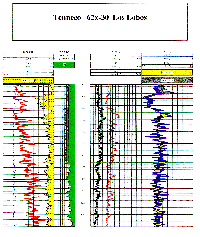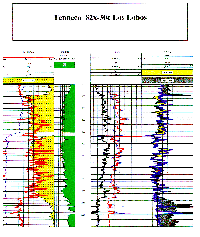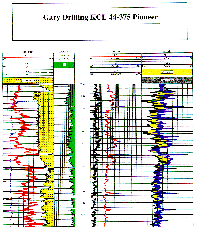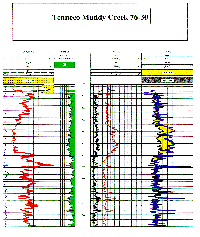



Four wells with complete log suites were selected for a comparative study. These four wells were analyzed using Pfeffer, QLA2, and Symbiolog (which was also used to analyze all the wells in the project), leading to various calculations of lithology and/or water saturation. The strengths and limitations of the various computer packages are demonstrated by this comparison (Figs. 11-17) .
Pfeffer
Pfeffer is a simple, inexpensive ($290) log-evaluation software add-in to Microsoft Excel, developed by University of Kansas researchers. It is extremely useful for quick-look analysis, and provides considerable insight into the petrophysical behavior of reservoir rocks. It is, however, also quite limited in its capabilities, and currently does not have a shaly-sand interpretation scheme. The four wells demonstrate a very fast data-load (from LAS) and an attractive and intuitive (to users of spreadsheets) interface. When data are loaded, and the proper curves identified, Pfeffer automatically creates an apparent resistivity curve, a water saturation curve, and a Bulk Volume Water curve. A "Super Pickett" plot can be constructed, which is basically a Pickett plot with additional lines superimposed for Bulk Volume Water, providing additional insight to possible water-cut problems during production. However, in the Pioneer data set, the formation is thinbedded and shaly, and a clean Archie-type analysis is insufficient. The Pfeffer program can be highly recommended for clean formations and for teaching purposes, but its lack of treatment of shaly sands limits its usefulness in the Monterey. Log displays are not necessarily the standard displays commonly used by petrophysicists, but can be modified by the Excel charting procedures to satisfy most users' needs.
Pfeffer Plotting Examples
| Tenneco 62x-30 Los Lobos showing resistivity | Log Traces | Picket Plots |
| Los Lobos 62x-30 | Los Lobos 82x-30C | KCL 44-375 | Tenneco Muddy Creek 76-30 |
 |
 |
 |
 |